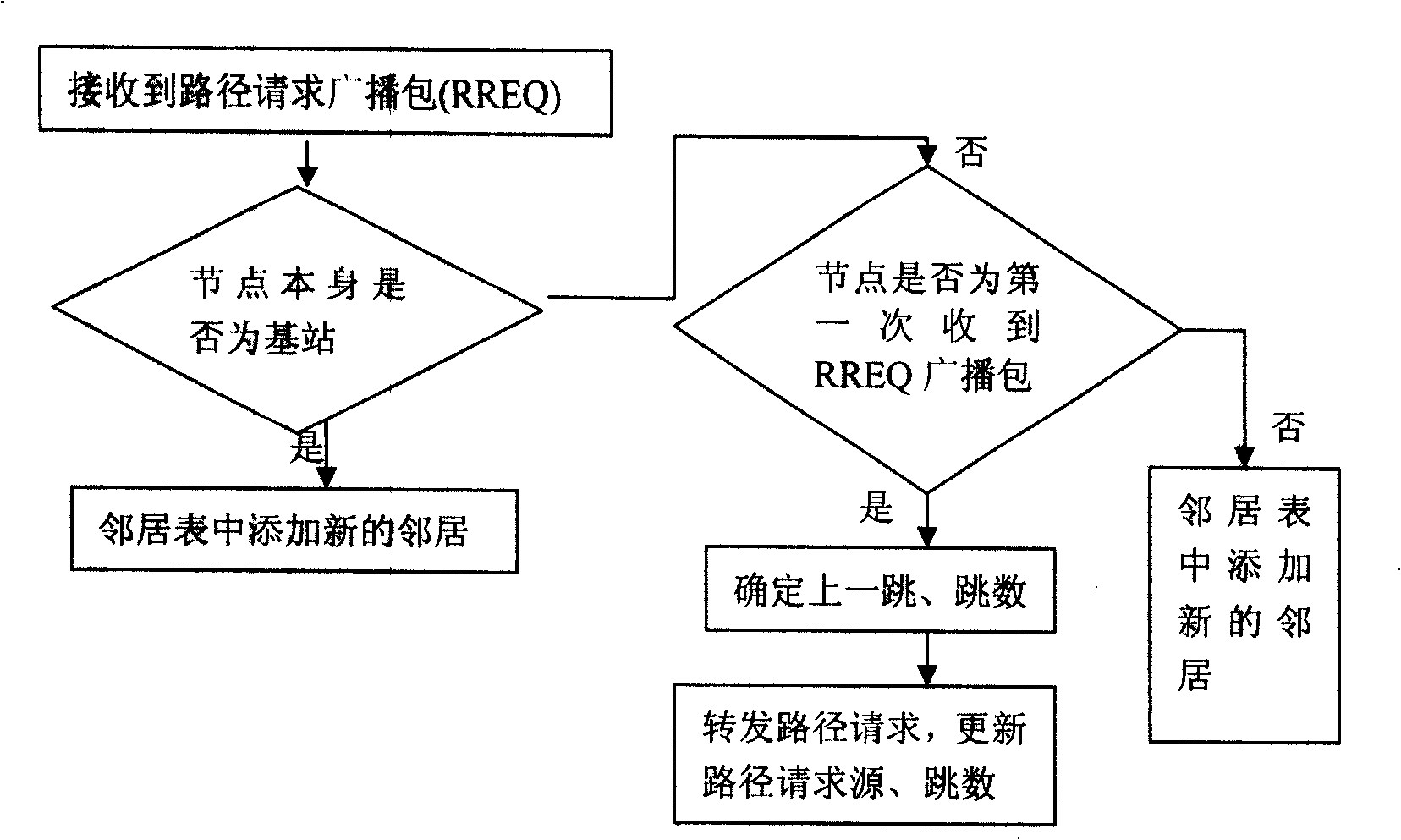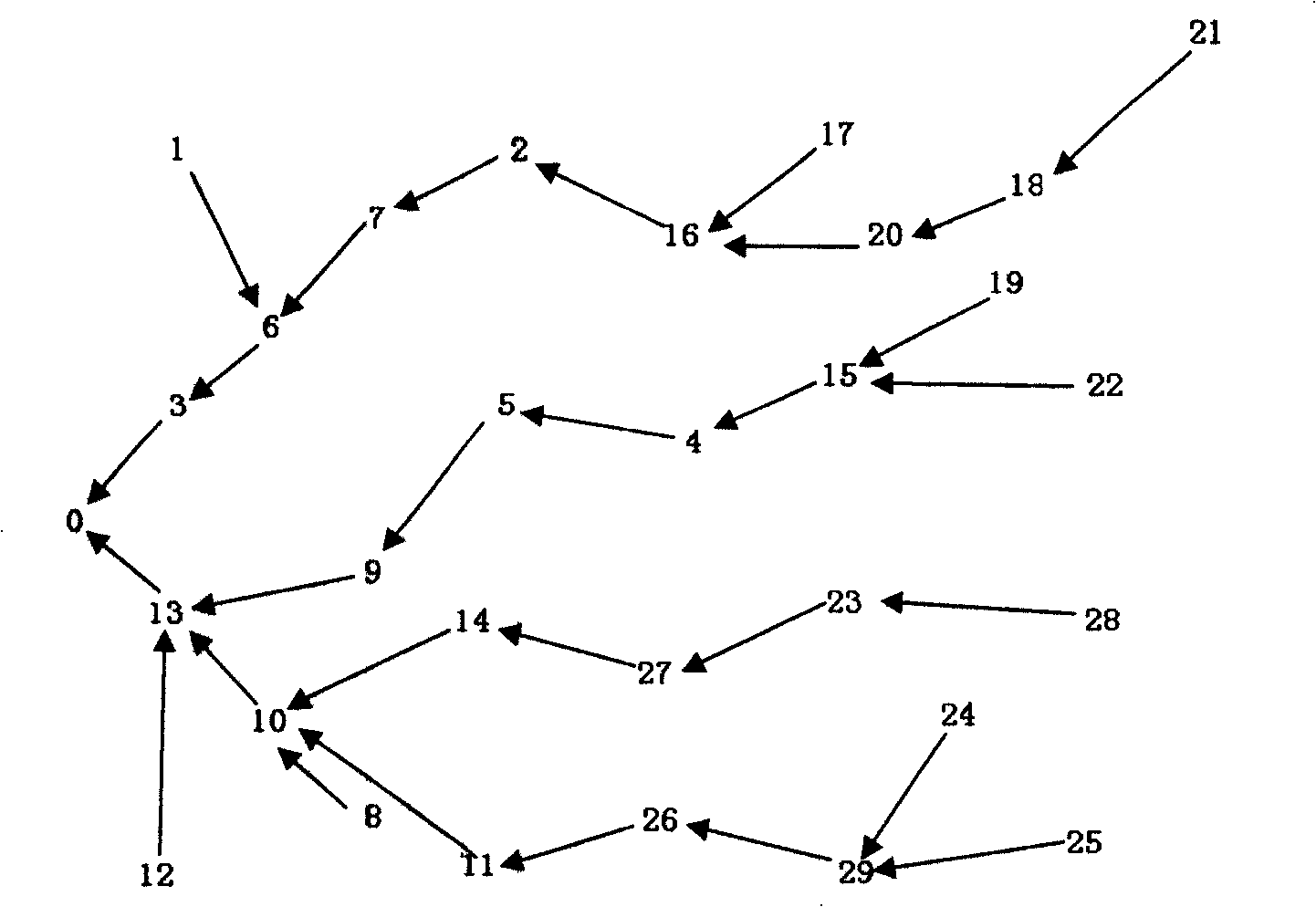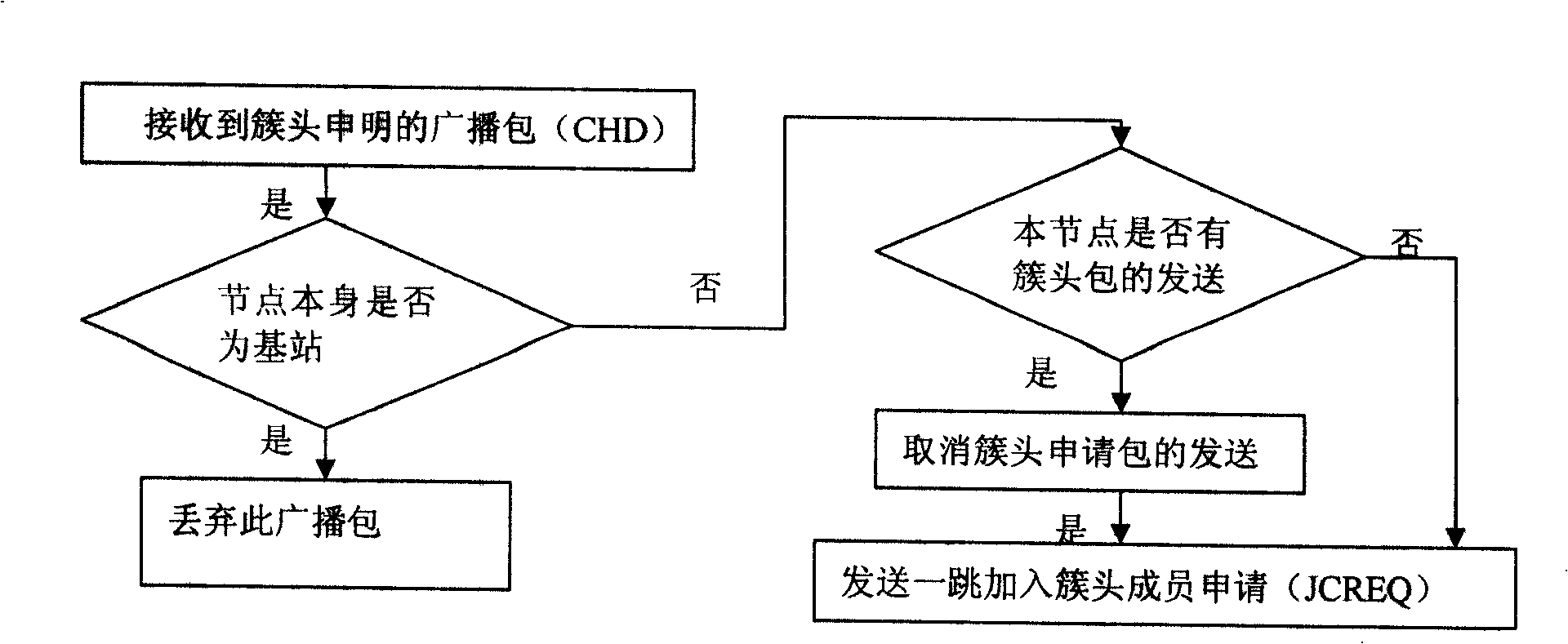Multi-hop clustering route protocol initiated by base station
A routing protocol and base station technology, applied in the field of sensor networks, can solve the problems of routing protocol limitations, storing large redundant information, etc., and achieve the effect of small delay
- Summary
- Abstract
- Description
- Claims
- Application Information
AI Technical Summary
Problems solved by technology
Method used
Image
Examples
Embodiment Construction
[0053] The present invention will be further described below in conjunction with the accompanying drawings and specific embodiments.
[0054] Step 1: Firstly, the base station starts the flooding broadcast (RREQ), and then other base stations forward the flooding broadcast respectively. In the process of flooding, the broadcast sequence number is used to control the flooding of broadcast information, that is, in the process of routing requests, only the broadcast received for the first time is responded to, and the routing broadcast received repeatedly is not passed on. And the source address of the sent or forwarded path request broadcast packet is used as its own previous hop.
[0055] Such as figure 1 As shown in the figure, the processing flow of the node receiving node receiving the RREQ broadcast packet is given in the figure.
[0056] Such as figure 2 As shown, the figure shows a routing tree formed by forwarding RREQs with 30 nodes in a rectangular distribution (no...
PUM
 Login to View More
Login to View More Abstract
Description
Claims
Application Information
 Login to View More
Login to View More - Generate Ideas
- Intellectual Property
- Life Sciences
- Materials
- Tech Scout
- Unparalleled Data Quality
- Higher Quality Content
- 60% Fewer Hallucinations
Browse by: Latest US Patents, China's latest patents, Technical Efficacy Thesaurus, Application Domain, Technology Topic, Popular Technical Reports.
© 2025 PatSnap. All rights reserved.Legal|Privacy policy|Modern Slavery Act Transparency Statement|Sitemap|About US| Contact US: help@patsnap.com



